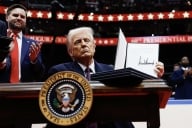You have /5 articles left.
Sign up for a free account or log in.
At a large Midwestern university, several white friends get together for drinks. One person makes a racial joke, another starts singing a song filled with derogatory words. A student makes a greeting card with the 'N-word' written on it and passes it around the room, despite objections from a few others. No one outside the group hears the banter or sees the card.
This scene comes courtesy of a student who participated in a scholarly study in which he was asked to observe conversations happening around him that involved race. In a forthcoming book, a researcher at the University of Dayton identifies hundreds of these journal entries describing what she considers to be racist conversations or events that are often tolerated when the white students are talking among themselves.
The results might help shed light on the controversial parties at numerous colleges that involved white students wearing blackface and dressing in stereotypical ghetto garb on Martin Luther King Jr. Day.
"What strikes me is how common these antics are and how casually students say the 'N-word'," said Leslie H. Picca, one of the book's co-authors and an assistant professor of sociology at Dayton. "What the MLK parties show is that there isn't an awareness among white students that their actions are problematic, even if black students aren't around to hear."
Picca's research shows that while many white students are prone to making derogatory comments in a "backstage" setting (a private gathering of friends), they are unlikely to start such a conversation when in a "frontstage" situation (a public setting where people of color might be present.) The research is featured in the book, "Two-Faced Racism: Whites in the Backstage and Frontstage," scheduled for release from Routledge Publishing in April.
For her dissertation at the University of Florida, Picca asked students at a number of institutions to keep the journal of conversations over a period of a few weeks during the 2002-3 academic year. More than 1,000 students participated, and Picca looked at entries of 626 white students who provided first-person accounts of interactions with others, mostly in the 18-to-25 age group. Students were instructed not to initiate the conversations or interview anyone about the topic.
Nearly 70 percent of students whose journals were viewed were white women, and the vast majority of students attended one of five colleges in either Florida or Georgia or a large university in the Midwest. Some of the colleges represented have very few black students enrolled.
Picca said she found that not only did white students stay away from conversations about race in the "frontstage," but many went out of their way to be polite to people of color when in public.
Joe. R. Feagin, a professor of sociology at Texas A&M University and co-author of the book, called the journals "pretty disturbing material." Feagin, who has spent much of his career studying white attitudes toward people of color, explored the issue of how white people discuss race in a public and private setting in his book, White Racism: The Basics. (Picca was a graduate student of Feagin's.)
Feagin said Picca is building on an argument backed by some sociologists that white racist thought hasn't disappeared but rather moved largely to the backstage setting.
"It's extremely common for white college students, guys especially, to start competing with each other, telling anti-Semitic jokes or anti-black jokes," he said.
Picca received journal entries from non-white students but is saving the information for a later report. Feagin said that the black students tended to write about what their white friends say in private and how it feels to be a "token" member of a group.
Picca's research suggests that white students keep their conversations secret by whispering or using code words and vague language to make racial descriptions. She writes that white women appear more likely to object to the racist language and jokes, even though they might face insults for the objections.
She said the derogatory terms used to describe people of color are being recycled from previous generations.
In the journals, few students admitted to being a principal actor in the derogatory conversation, but some admitted to participating.
"For many white students, they felt bad [hearing this talk] and wrote that they wanted to confront their friends but didn't have the courage," Picca said. "There is a glimmer of hope for raised awareness of what's problematic here."




